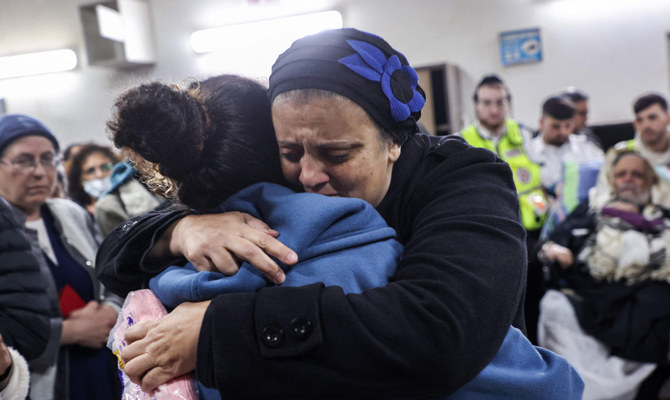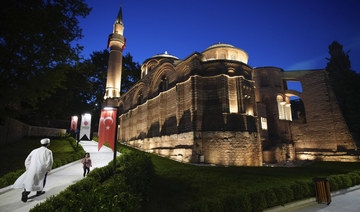RAMALLAH: The killing of three Israelis on Nov. 15 by a Palestinian teenager has placed into question security arrangements provided by the army and Israel’s internal security agency Shin Bet.
It has also given rise to speculation as to what steps the next far-right government under Benjamin Netanyahu could take to control Palestinians in the West Bank.
The teenager killed the three Israelis near a Jewish settlement in the occupied West Bank on Tuesday and was hailed by militants as a hero, hours before Israel swore in lawmakers set to return Netanyahu to power atop a hard-right coalition.
The escalation of Palestinian resistance operations in the occupied West Bank and Jerusalem has resulted in the killing of 29 Israelis since the beginning of the year — 19 in Jerusalem and Israel and 10 in the West Bank.
Israeli military analysts say that the attacks are no longer a wave but a new reality and that the new government will not have any new solution to the problem.
Yossi Yehoshua, a military analyst for the newspaper Yedioth Ahronoth, said individual attacks, whose perpetrators bypass Shin Bet, can only be prevented by better professional action on the part of the army and field civilian forces.
He added: “The Israeli army cannot deploy more regular forces in the West Bank because almost all units have been present since last March. These forces are not trained, and their competencies have been damaged.”
Amos Harel, a military analyst for Haaretz newspaper, said: “There is constant friction over police activities carried out by the Israeli army against the Palestinian population and between Palestinian villages and neighboring settlements."
Israeli forces launched a massive campaign to arrest Palestinians in Nablus amid armed clashes early on Wednesday. At the same time, settlers in the West Bank attacked and assaulted Palestinian citizens, burned a truck, and threw stones at cars.
The US has expressed its concern about the renewed violence.
Taysir Nasrallah, a Fatah Revolutionary Council member, told Arab News that the Israelis have no solution to the anger, frustration and loss of Palestinian hope, except for the security solution, which has proved to be a failure so far.
He said: “If the Israelis are not convinced that their security and military measures and collective punishments against the Palestinians have failed, they will continue to suffer in the same cycle.
“Additionally, the more collective punishments increase, the more individual attacks we witness because Palestinian youths are frustrated and without hope for the future.
“I do not see any voices within Israeli society seeking to know the causes of this violence, and preferring to adopt a political path that gives the Palestinian people their rights.
“Rather, they threaten to attack Gaza because that is easier for their army than confronting Palestinian children in the West Bank.”
The Palestinian Foreign Ministry called on the Israeli government to stop protecting terrorist settler organizations and to curb them and dismantle their bases in the occupied West Bank. This would, it argues, dry up their sources of funding and deprive them of any legitimacy.
It holds the Israeli government fully and directly responsible for the repeated attacks by the army and settlers against Palestinians, adding that settler attacks are carried out under the protection of the armed forces.
Hamas spokesman Abd Al-Latif Al-Qanou said the daily killings of Palestinian people would push the resistance to expand.
Another Hamas official, Osama Hamdan, said the Israeli security forces felt a failure, in contrast to the “heroism of the Palestinian youths.”
Meanwhile, Israel’s departing Prime Minister Yair Lapid doubled down on his government’s harsh condemnation of a reported investigation by the US Department of Justice into the killing of Shireen Abu Akleh, a Palestinian-American journalist, in the occupied West Bank.
Lapid vowed Israel would not participate in the probe into the fatal shooting of the 51-year-old Al Jazeera correspondent in Jenin in May.
Echoing remarks by Israeli Defense Minister Benny Gantz the previous day, Lapid said that Israeli soldiers “will not be investigated by the FBI or by any foreign country or body, however friendly.”
However, the Palestinian Authority welcomed the news and promised to cooperate fully with a US investigation.



























